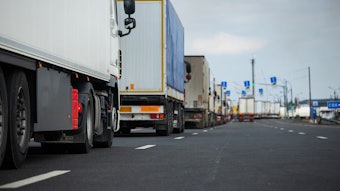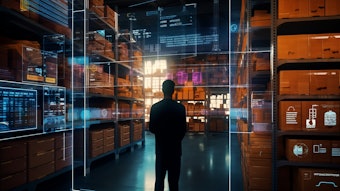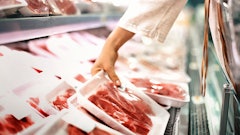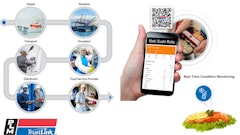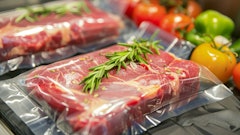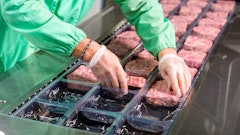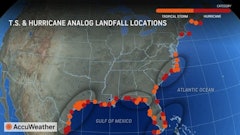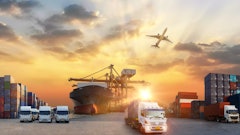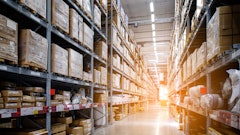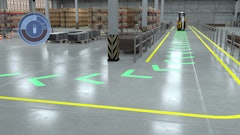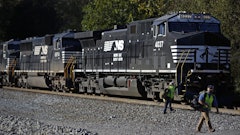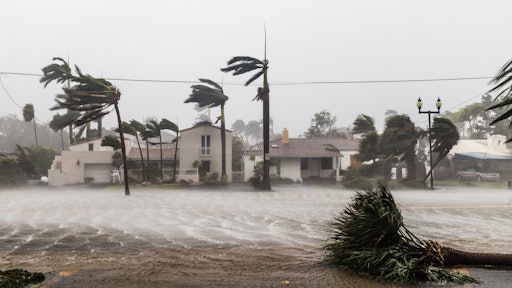
Manufacturers seem to be facing supply chain disruptions from all angles. From material shortages and shipping delays to economic uncertainty and rapidly changing demand, planning ahead in such a volatile market is challenging. While none of these variables are wholly within manufacturers’ control, logistics and operations professionals have become relatively adept at using tech to anticipate market turmoil.
Severe weather is another, even more unpredictable, story. Though modern weather forecasting can be incredibly precise, knowing that a storm is coming is only the first step—and it’s the easiest to plan for. It’s the often surprising and lingering aftereffects of severe climate events that throw manufacturing operations off course, and anticipating how these disruptions will play out is only becoming more difficult and complex.
With summer kicking off and another “unprecedented” year of natural hazards expected to come with it, it is time for manufacturers to focus the power of their predictive systems on contingency planning for heat waves, droughts, severe storms, and other climate-related concerns.
When it rains, it pours
The first challenge facing food manufacturers is climate change, the effects of which have become increasingly clear over the past few years. Severe weather and natural hazards have become not only more frequent but more intense. In 2023 alone, the United States faced 28 separate natural disasters whose damage totaled $1 billion each—six more than in 2020, which held the record prior, and the total cost of climate-related incidents to U.S. food production neared $22 billion.
Temperatures are rising, hurricane winds are getting stronger, fires are lasting longer, and rain is falling at ever-increasing volumes. All these variables affect crop yields, quality, and other critical elements of commercial agriculture. Not to mention that the threshold for “severity” is changing, which makes the outcomes of any given incident more difficult to anticipate or plan around. If we haven’t seen something before, how can we know what kinds of problems it might herald?
Failed harvests aren’t the only impact increasingly unpredictable weather patterns can have on food manufacturers. These incidents can cause other, more variable disruptions throughout the supply chain—especially when it comes to transportation and fulfillment. Put simply, our infrastructure was not built to contend with these kinds of extreme conditions and certainly not to repeated exposure. That means collapsing bridges, melting roads, and the transportation delays that come with them will only become more frequent in the coming years, extending shipping timelines with little warning—a major concern for those shipping perishables.
Manufacturing facilities themselves may also be at risk. Just like roads, bridges, and other transportation infrastructure, buildings and utilities are designed to withstand average conditions in their regions. They, too, are failing more frequently due to ongoing exposure to extremes. Take, for example, 2023’s Texas heatwave, which nearly brought the state’s power grid to its knees for the second time in two years.
Meanwhile, the global structure of the supply chain itself plays a role in the increasing difficulty manufacturers face when planning around severe weather. Our forebears had to plan around environmental hazards to be sure. But they only had to plan around their own natural hazards. Today’s connected supply chain has turned local incidents into global issues, as a drought, collapsed bridge, or blizzard in one region can impact operations worldwide and across sectors.
Of course, all of the above is true regardless of the sector a manufacturer operates within, but it’s particularly important that food manufacturers are prepared to respond to these incidents. Not only can unforeseen delays be particularly devastating to bottom lines when perishables are involved, but food supply chains are themselves part of the world’s critical infrastructure. If food products cannot reach affected areas, that’s a whole other disaster waiting to happen.
Nature’s mysteries, solved
With all these variables to consider, the task of monitoring weather patterns and developing contingency plans to mitigate their consequences is a more challenging undertaking than many people realize. Luckily, the manufacturing execution systems (MES) and other connected platforms that help managers optimize their operations can also support more effective severe weather contingency planning.
Manufacturers across verticals have been integrating MES platforms and artificial intelligence into their operations to refine processes, manage inventory, and mature quality assurance and control programs. These systems help them do it by automating data collection, monitoring, and analytics to alert managers to conditions that may indicate issues on the horizon. By integrating real-time and historical data about internal operations with information about suppliers, buyers, and market conditions, they enable the kind of agility food manufacturers need to pivot when disruptions threaten their operations.
Adding in additional data streams can help extend these risk assessments beyond the factory’s four walls. Layering real-time and historical weather data (for both facility locations and other key regions) into the system can show how storms, floods, fires, and other environmental threats have affected operations in the past. This sheds light on the scenarios most likely to impact production and their outcomes so teams can reassess their contingency planning to ensure that the safeguards they’re putting into place accurately address the enterprise’s risks. As weather events become more severe, this may also help manufacturers anticipate the effects of “unprecedented” incidents, as it can uncover patterns that logistics teams may otherwise miss.
Working with suppliers that use similar data in their operations can add more color to the process, so teams pinpoint the most effective alternatives should a storm threaten part of a key partner’s operations. As an additional bonus, this level of transparency can strengthen partnerships between manufacturers and their suppliers by enabling agility for both parties.
Outside of adaptability in the face of looming threats, the AI and automation capabilities that MES platforms enable can make it easier for food and beverage manufacturers to embrace emerging models that boost resilience. Opting to utilize micro-factories, for example, can help ensure that an event in one area doesn’t put a stop to entire operations or interfere with fulfillment.
Weatherproofing operations with sound planning
Positioning weather-related risks as a “modern” problem may seem a strange claim. People have been planning around stormy skies and dry seasons since our earliest days, and many of them did so with only the most basic prediction methods at their disposal. But today’s planners face a slew of unique challenges associated with operating in both the modern age and business landscape.
Getting it right requires a deep understanding of an organization’s supply chain and internal operations. And, while there’s still no way to completely avoid brewing storms or anticipate exactly what will go wrong, MES platforms, artificial intelligence, machine learning and other specially designed technologies can help logistics teams get one step closer. The deep insights they provide and the new operating models they enable may not empower manufacturers to see into the future, but they can help them plan more effectively so they’re ready to respond when summer storms hit.
